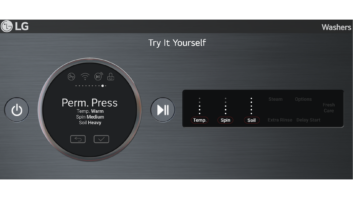
We’ve all tried to spend more hours at the gym, or give up sugary drinks, but as anyone who’s ever tried knows, bad habits are easier to form than they are to break. And, in the ol’ Wild West of retail sales, one salesperson’s bad habit can easily make their way to the entire team, resulting in lower sales and falling revenue.
Below, we’ve identified the 10 very worst bad retail sales habits that need to be broken this year and ways to kick them to the curb:
No. 1: Not selling to everyone
Problem: Why, why, why would every customer not be offered products or services? Who knows? But it happens. (Insert excuse here.)
Solution: No more excuses. No more making decisions for the customer. Present to everyone. Remember, you lose 100 percent of the sales you don’t offer.
No. 2: Clerking
Problem: There’s a difference between clerking and selling. Clerking is simply exchanging money and asking if they’d “like fries with that.” Don’t be a clerk or a cashier, be a salesperson.
Solution: Sell! Sell! Sell! Don’t let the customer steer the conversation. Establish a sales process that builds value before you get to the register. Doing this will help you become a bona fide salesperson who can improve your customers’ lives.
No. 3: Overwhelming customers with everything at once
Problem: Sometimes knowing the product isn’t the issue, but learning how and when to use it is. Just because a sales rep knows everything doesn’t mean the customer needs to hear it.
Solution: If a connection with the customer has been made, deciding what information to share, and when, becomes easy. Demonstrate that you’ve listened by presenting only what will resonate with the customer, instead of hurling value props until one sticks.
No. 4: Believing you’re short on time
No. 5: Believing the store is too busy
Problem: These two habits go hand in hand. Look, we’re all busy; the customer and you as well. Still, you have a job to do. Take a breath and proceed.
Solution: Always provide customers with the best experience possible. This includes making them aware of any potential products and services that could benefit them (see No. 10) and treating them like they’re the only person in the store (see No. 7).
No. 6: Too much terminology
Problem: Slinging around fancy-schmancy specs about your products doesn’t necessarily help you sell more. While certain terminology may be well known internally, it is likely foreign to the customer.
Solution: Know your audience. Talk about products using vocabulary the customer is accustomed to. However, you should still be sure to use the correct legal or compliance language laid out for you.
No. 7: Failing to connect
Problem: When sales representatives don’t learn anything about their customers, it’s very difficult to inform them of how products and services can truly enhance their lives.
Solution: Take time to learn about customer needs and link those needs to the right product or service solution. There’s no need for a “hard close” if a customer trusts you. Connect and they will take your recommendations.
No. 8: Failing to close
Problem: Sales reps present the value of a product without a closing statement resulting in an awkward silence. The natural reaction is to fill the silence with a data dump, a communication breakdown that can kill a sale.
Solution: At the end of the benefit presentation, employing soft closing statements such as “How does that sound?” or “We will set that up for you today as well, sound good?” can take the customer to the finish line. You’ll either receive a yes from your prospect, a clarifying question you can answer to close the sale, or an objection you can overcome. Avoid the awkward silence and guide the customer to the close.
No. 9: Leading with price
Problem: Once price is established, it has to be overcome with value. This can often be difficult because customers may have already been turned off by the cost.
Solution: Always lead with value. Using knowledge of your customer’s specific needs, build a mountain of benefits that will easily tower over the cost you present later.
No. 10: Low self confidence
Problem: Good salespeople are confident, and confidence is contagious. If a salesperson isn’t confident in their product or in the act of selling, consumers won’t be confident about a purchase.
Solution: Knowledge is power. Know your products and the confidence of both you and your customers will grow (and so will your sales). Practice role-playing to rehearse pitches and overcome objections and it will translate into success.
Kevin Cundiff is warranty retail VP at Fortegra Financial Corp., a single-source insurance company that, through a network of preferred partners, offers a range of specialty program underwriting, credit protection, and warranty solutions. A subsidiary of Tiptree Financial, it delivers multi-faceted coverage with the promise of “empowering consumers to worry less and experience more.”













